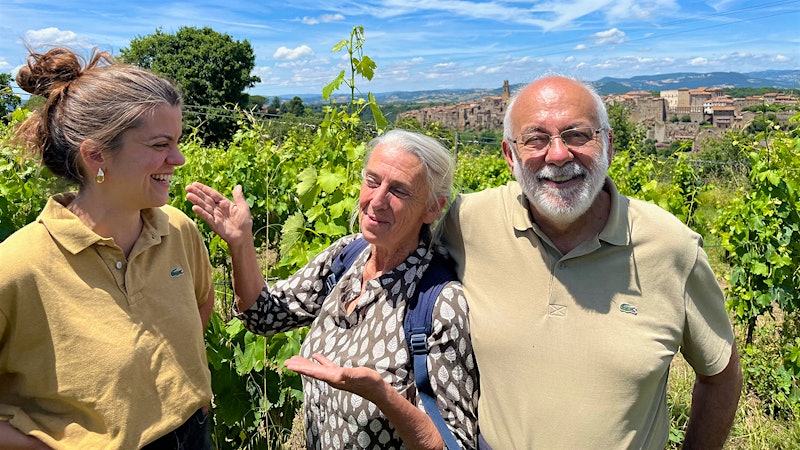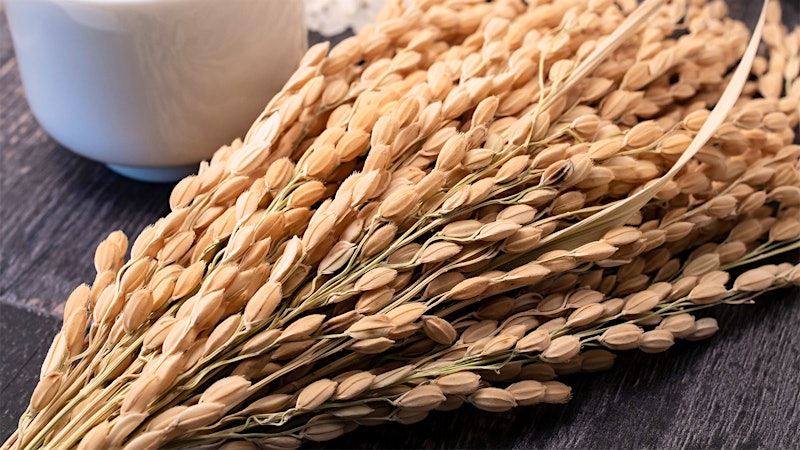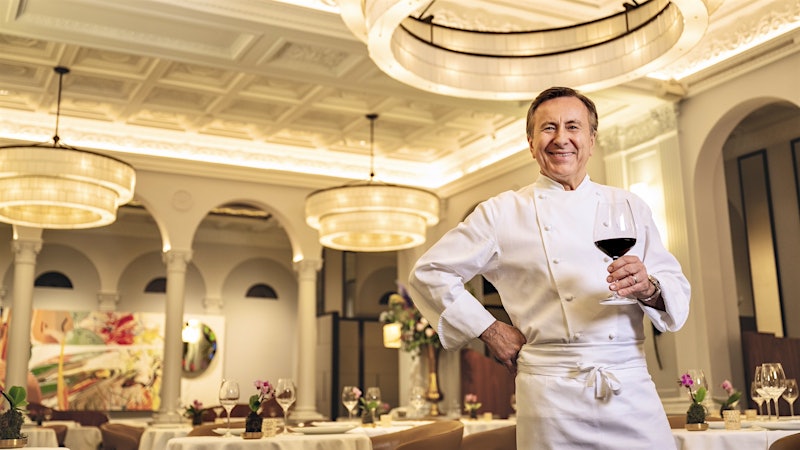Enrico Bertoz is living an Italian’s California dream.
In 1998, he and his soon-to-be wife, Letizia, quit their philosophy studies in northeastern Italy’s Friuli region to explore life in Los Angeles.
Bertoz was inspired by what he calls “the American spirit,” which he found in reading the work of Jack Kerouac and listening to music that spanned the blues (as a teenager, he and his dad took a road trip through the Deep South) to Bob Dylan to grunge.
In L.A., he worked for wine-loving restaurateur Piero Selvaggio at Valentino, washing dishes, bussing tables and, fatefully, stocking Valentino’s legendary, Grand Award–winning wine cellar. “The more I worked in the cellar, the wine took me by osmosis,” recalls Bertoz.
Prior to his job at Valentino (now closed), Bertoz had no real wine experience. Like many students seeking pocket money and a convivial time, he and Letizia had casually worked harvests in Friuli for the likes of Jermann and others.
Some years into their L.A. life, when Valentino’s head sommelier left, Bertoz jumped at the opportunity to take over as wine director.
Through his work, Bertoz became inspired by winemaking—in particular that of Sine Qua Non, the Ventura County winery founded by native Austrian and L.A. restaurateur Manfred Krankl, whose eclectic wines are eccentrically named and labeled and highly prized.
Bertoz volunteered to work Sine Qua Non’s 2004 harvest, during which Krankl’s meticulous methods changed his life again. “All the details were spot on and obsessive in a beautiful way. Nothing was left to chance,” Bertoz recalls. “It was work that was so encompassing, I knew I had to do it.”
With that bit of SQN experience, Bertoz took Krankl’s advice to move to Northern California. The following year, with his newly issued U.S. green card, he readily found cellar jobs in Napa Valley and enrolled in the winemaking certificate program at U.C. Davis.
The Beginnings of Arbe Garbe
At 50, Bertoz exudes a freewheeling vibe, accentuated by the mop of wild and wiry curls flopped atop his head. For 16 years, he has worked at Flora Springs, the last five years as chief winemaker for the St. Helena–based winery and its custom-crush facility. There, he works mostly with Cabernet Sauvignon and other French varieties.
Apart from his “day job,” Bertoz has also become a cult winemaker focusing on rare, mostly Italian wine grapes in Sonoma County. He and Letizia launched their micro-production label, Arbe Garbe (which in Friulian dialect means “bad weeds”), in 2007, when Bertoz was cellar master at Napa’s Girard.
When he saw the diversity of grape varieties at Saralee’s Vineyard in the Russian River Valley, he “begged” owner Saralee Kunde to sell him a ton of Malvasia, Pinot Bianco and Viognier, which comprised his first blend, totaling 200 cases.

Letizia was his lead taster on the blends. In those early days, as a new mother, she often brought her first toddler with her as she delivered wine from the trunk of her car throughout the San Francisco Bay Area.
Over time, Bertoz experimented with different Malvasia blends, as well as with reds based on Charbono. Arbe Garbe’s peak production reached a mere 600 cases.
But aromatic Malvasia Bianca—part of the ancient Malvasia grape family found across his native Friuli, Italy, and other parts of the Old World—became Bertoz’s obsession.
“I experimented with every grape under the sun. The only constant was Malvasia,” he says. “It has this set of aromatics that are unique to Malvasia. Boom—it’s just there.”
Like most wine lovers, I’ve never focused that much on Malvasia. But listening to Bertoz sparks your curiosity—and thirst. “I tell you, there is something magical about that grape,” he enthuses.
In 2011, he got a boost in notoriety when he made a collaborative white wine with Dan Petroski of Massican (sold last year to Gallo) called Doi di Copis. The 300-magnum release was a blend of equal parts of Bertoz’s Malvasia with Petroski’s Tocai Friulano.
The following year, the Kunde family sold Saralee’s Vineyard to Jackson Family Wines, but Saralee Kunde vowed to continue as Bertoz’s source for Malvasia and regrafted an acre of Chardonnay at the family’s Catie’s Corner Vineyard for him. Though Saralee passed in 2014, Bertoz still leases that plot from the family.
Several years later, during a COVID lockdown, Bertoz had an epiphany: He decided to focus all his attention at Arbe Garbe on the grape that most fascinated him.
Why Make Malvasia in California?
While Malvasia is rare in California and typically used there for blending, it is ubiquitous in varietal wines across the Mediterranean, from the Greek Islands to Spain. Across Italy’s mainland and in Sicily, it makes dry, sweet and sparkling whites. (In Portugal, it’s a component of fortified Madeira).
“I wanted to convey what I taste when I taste a cluster of Malvasia,” he says, eyes widening. “Within the same cluster, you have all these different flavors and ripeness.”
In the previous two vintages, Bertoz’s quest for that kind of complexity has led him to vinify his Malvasia three ways before blending and barrel aging. Most of the wine is fermented from the juice of pressed whole clusters. About 15 percent is fermented on its skins, and 5 percent is made from grape clusters that are dried on racks for about six weeks, akin to the appassimento process used for Amarone.
The first of those vintages, the 2022 (to be released this spring), is a multi-layered wine that unfurls after some minutes in the glass. Fresh, flinty and saline, it smells of dried flowers, exotic teas and chamomile. To ensure the level of ripeness and complexity he desires in the grapes, Bertoz keeps vineyard yields low, making a mere 200 cases.
“It’s easy to make a sunny-side-up Malvasia, but I don’t want to make sunny-side-up Malvasia,” he says. With the humility of a perpetual “seeker,” he then adds, “To perfectly translate what I taste when I taste a bunch of Malvasia, that is my always unreachable goal.”











